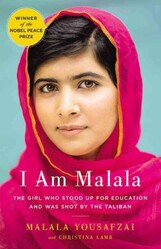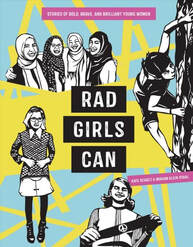
Malala Yousafzai is world famous. She has received countless awards and honors, and is the youngest recipient of the Nobel Peace Prize in world history. Hers is now a household name.
But before all of that, she was an ordinary girl, born and raised in the beautiful Swat Valley in Pakistan, attending school and playing with her younger brothers. Her lifestyle was very different from that of most American children, but her world was a peaceful one, and she was happy.
Then the Taliban came, and her world turned upside down. The Taliban called girls weak and inferior to boys, and said that educating them is a waste of time and money. Suddenly, Malala couldn’t go to school, and she began to realize how much learning meant to her. Her father, a community leader and activist, had always taught her to stand up for what she believed in, and she began to give speeches with him, writing, traveling, and doing anything she could to get her voice heard. She spoke up, and people listened. She gained widespread recognition for her work for women’s rights and education—but it was only when the Taliban tried to assassinate her that she entered the world spotlight.
Powerful, moving, and inspiring, this book completely lived up to my high expectations. Malala’s determination and courage shine through as she writes, exploring the complex politics and history of her native country. Her perspective, as a civilian who survived in a place of countless attacks, threats, battles, and bombs, gives a vivid picture of the bloody conflict that has defined so much of her life, and is deeply honest and human in a way that a news story or government report could never be.
Malala is an amazing speaker and activist, and I loved learning about her. She is inspirational and yet still relatable, and her passion for social justice has made her a symbol of peaceful protest and positive change around the world. This is a story of violence and terrorism, yes, and of the horrors that continue to occur around the world. Yet it is told with hope, voiced by a girl who nearly died for her cause, yet continues to fight—and risk her life—to realize her dreams of education and equality for girls everywhere.
Note: I would recommend I am Malala for readers ages 12 and up, since parts of it are upsetting or would be too confusing for younger kids. However, there is also a young reader’s edition available, which Piranha T. read and enjoyed—it’s a story which is important to know, and which version ever you read, you’re sure to be inspired!







 RSS Feed
RSS Feed
